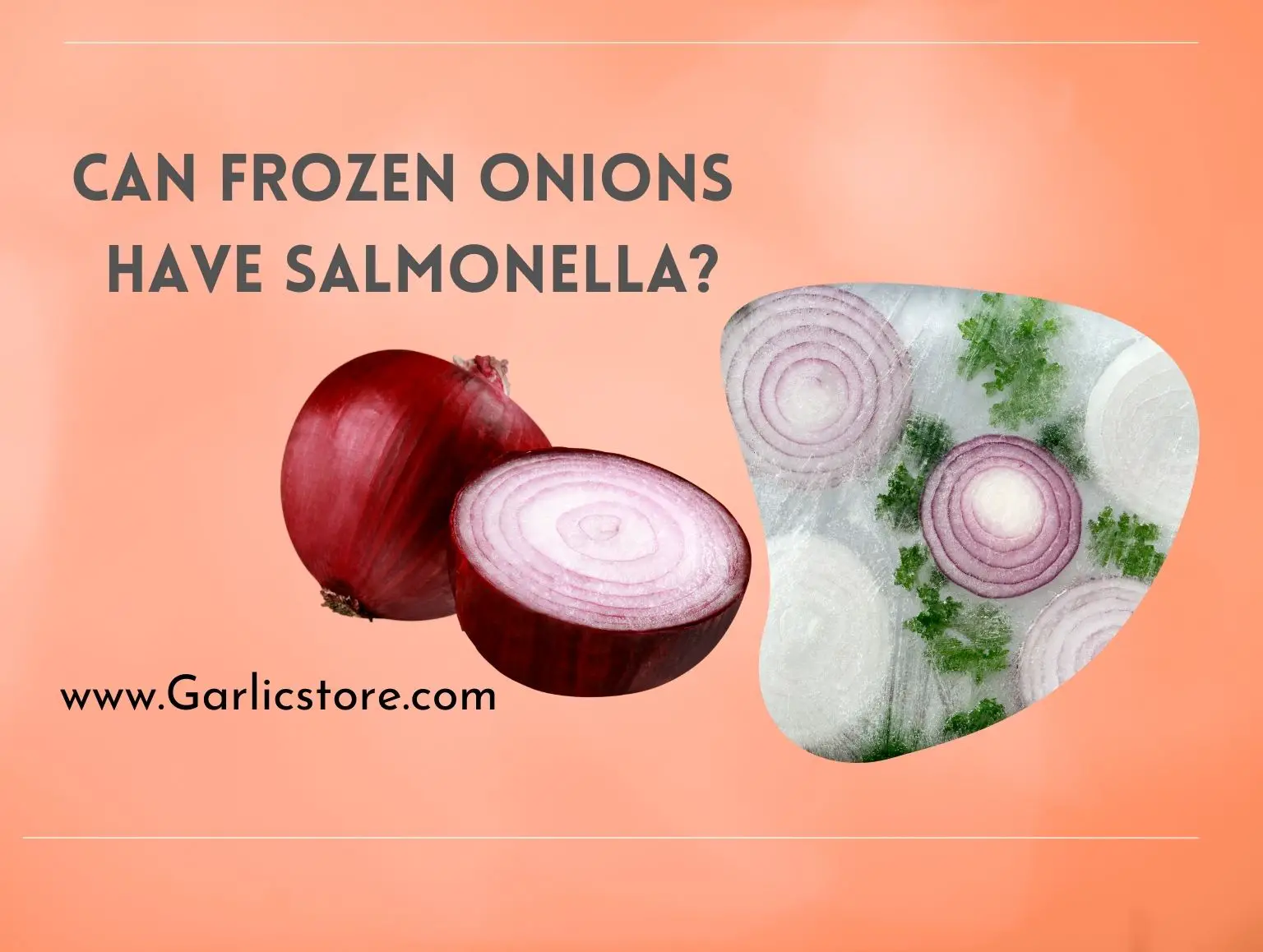You may have come across news headlines about hundreds falling ill after eating onions contaminated with Salmonella. The Salmonella outbreak was traced back to fresh, whole onions imported from Chihuahua, Mexico, and it rapidly expanded across the whole nation.
These onions were distributed to over 37 states, including Florida, Ohio, Alabama, among others.
According to the Centers for Disease Control and Prevention (CDC) report, consumers were advised to refrain from buying or eating white, red, and yellow onions imported from Chihuahua, Mexico, between July and August 2021.
Salmonella-contaminated onions have been found in pre-packaged, mail-order meal kits. These recent happenings have left consumers wondering whether frozen onions are safe for consumption, should they throw them away, and what is causing the salmonella outbreak.
What Is Salmonella?
Salmonella is a bacteria that can live in the intestinal tracts of humans and other animals. This bacteria is responsible for many cases of food poisoning. It is often transmitted to humans through the consumption of infected produce.
Salmonella can be found in many foods, including frozen onions and other vegetables, fruits, chicken eggs, pork, and even processed foods like nut kinds of butter, chicken nuggets, stuffed chicken entrees, and frozen pot pies.
What Causes Salmonella in Frozen Onions?
Onions can become contaminated with salmonella at any point in the food supply chain – while growing in the fields, during processing or distribution, or when being prepared at home or even in a restaurant.
How Did the Affected Yellow Onions Enter the Country?
According to reports by the CDC, the potentially affected onions were imported by the companies Keeler Family Farms and ProSource Produce LLC. During that period, both companies issued recalls for their red, yellow, and white onions, which they had distributed to retail stores throughout the country.
In a different report by the FDA, 3 and 5-pound bags of fresh onions from Potandon Produce LLC, Pier-C Produce, and Alsum Farms & Produce Inc imported from Mexico are also part of the recall.
The recall, however, did not affect any green giant fresh products, frozen vegetable products, or green giant canned products.
What Triggered This Food Safety Alert From the Cdc?
The Center for Disease Control issued a food safety alert after receiving reports that a salmonella outbreak had resulted in more than 600 illnesses and more than 200 hospitalizations across the country. The outbreak was linked to fresh whole yellow onions imported from Mexico.
What to Do With Recalled Onions?
The CDC advises consumers to throw away these onions instead of cooking them due to fears of cross-contamination. That is to say, there is a concern that salmonella from contaminated onions could end up on surfaces in the kitchen and ultimately infect other foods, utensils, and appliances.
What Are the Effects of Salmonella Infection?
Salmonella illness can be serious and is more dangerous for certain people. While anyone can get a salmonella infection, this condition is more likely to develop into a serious illness in children under the age of 5 years, people with weakened immune systems from medical conditions such as cancer, diabetes, or liver disease, and older adults. In rare cases, salmonella infection can produce more severe illnesses such as arthritis, aneurysms, and endocarditis.
Signs of a Salmonella Infection
Unfortunately, contaminated frozen onions usually look, smell, and taste normal. This is why it is crucial to know how to prevent infection. The CDC lists these as the top signs of salmonella infection to watch out for:
- Severe vomiting
- stomach cramps
- Dehydration
- Feeling dizzy
- Dry mouth and throat
- Diarrhea that persists for more than 3 days
Generally, these symptoms start manifesting within 12-72 hours of infection. Most people can recover at home in less than four to seven days, but some cases can be severe – even fatal- especially among young children, the elderly, and immunocompromised people.
How to Prevent Salmonella Bacteria
Food safety is the key to preventing salmonella infections
Proper Sanitation
While rinsing affected onions won’t completely get rid of salmonella, it is still important to handle food safely. First, ensure you rinse your onions under running water. If you can, scrub them with a small vegetable brush to remove surface dirt.
Also, take care to disinfect all surfaces in your kitchen that come in contact with food items such as knives and chopping boards.
These surfaces may include storage bins, drawers, countertops, zip-lock bags, etc. Wash these surfaces and containers with hot soapy water.
Properly Cook Onions
Cooking provides an effective way to kill salmonella bacteria. However, health officials warn people against eating potentially contaminated onions or recalled onions because of salmonella risk.
This basically means do not eat recalled onions whether rinsed, cooked, or not.
Ensure Proper Storage
Check the temperature of your refrigerator since bacteria can thrive in environments where the temperature is not regulated.
Do Not Buy Unmarked Onions
According to the Food Safety Research and Testing, refrain from buying or eating fresh whole red onions or fresh whole white onions supplied from Chihuahua, Mexico. If your whole onions do not have a sticker or packaging indication of their source, get rid of them.
Conclusion
To date, potential sources of salmonella remain ongoing, although no onions marketed through the Keeler family farms or ProSource have tested positive for Salmonella. Onions received into the country after September 8, 2021, are okay.
Sources:
- https://www.cdc.gov/salmonella/oranienburg-09-21/index.html
- https://www.fda.gov/food/outbreaks-foodborne-illness/outbreak-investigation-salmonella-oranienburg-whole-fresh-onions-october-2021
- https://www.cdc.gov/salmonella/general/prevention.html
- https://www.thespruceeats.com/onion-recall-salmonella-cooking-2021-5208055
- https://www.healthline.com/health-news/salmonella-outbreak-linked-to-onions-what-to-know
- https://edition.cnn.com/2021/11/20/us/onions-recall-salmonella/index.html

